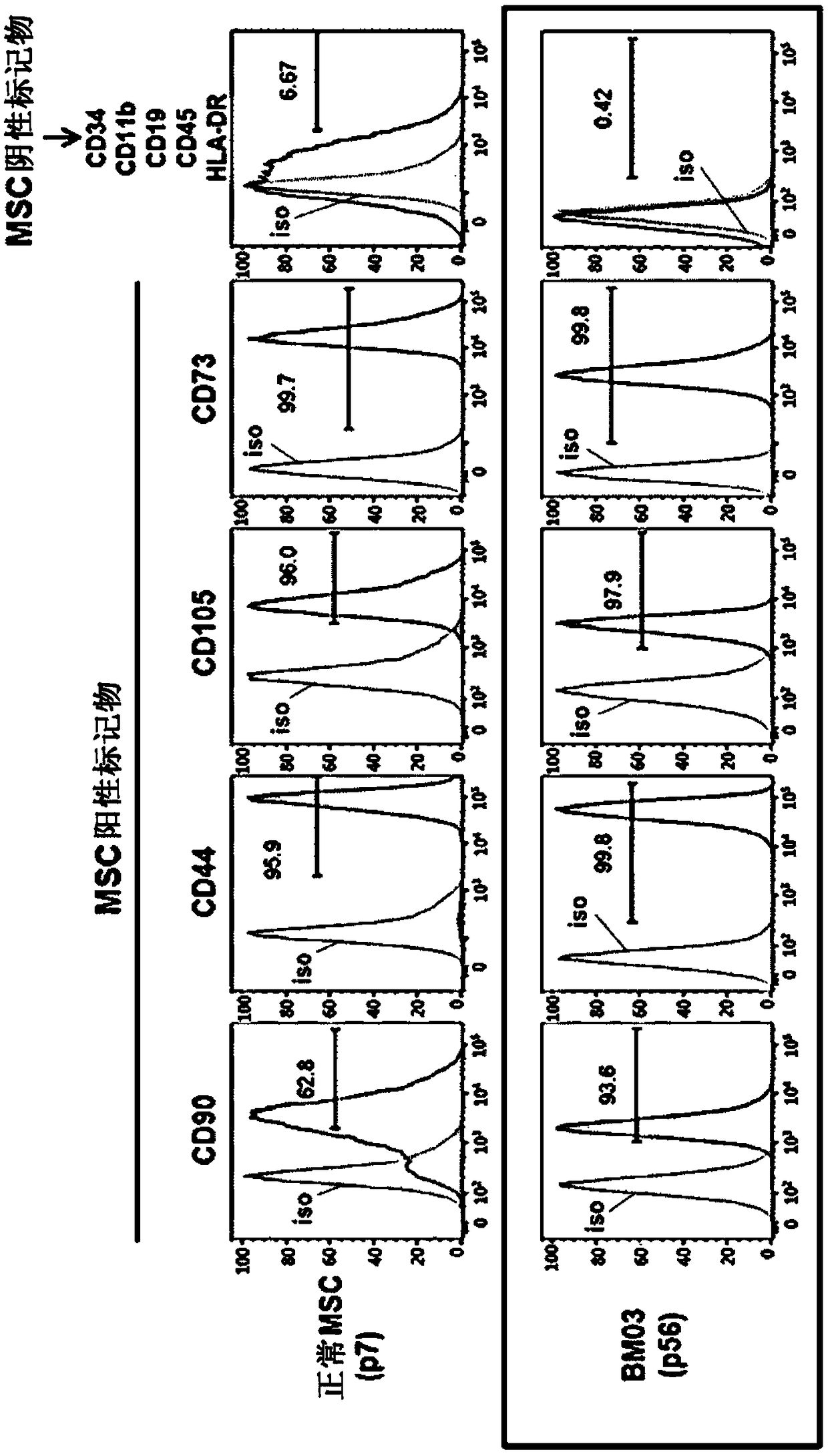Mesenchymal stem cell expressing trail and cd, and use thereof
A technology of host cells and recombinant lentiviruses, applied in the field of recombinant lentiviral vectors, can solve the problems of mesenchymal stem cells, difficulty in mass production of MSCs, and proliferation limitation of MSCs, etc., to achieve high safety and prevent Possibility, effect of preventing tumor formation
- Summary
- Abstract
- Description
- Claims
- Application Information
AI Technical Summary
Problems solved by technology
Method used
Image
Examples
Embodiment 1
[0071] Example 1. Preparation of Immortalized Mesenchymal Stem Cells (MSCs)
[0072] 1-1. Preparation of lentiviral vector containing immortalization gene
[0073] To immortalize MSCs, lentiviral vectors containing the immortalization genes c-Myc and hTERT, respectively, were prepared. Here, a gene construct expressing tTA protein was inserted together to use the Tet-off system.
[0074] First, the pBD lentiviral vector was prepared by replacing the EF promoter in the expression cassette of the pWPT vector (Addgene, USA) with the CMV promoter and adding the RSV promoter downstream of it.
[0075]The c-Myc gene (SEQ ID NO:8) and the thymidine kinase (TK) gene (SEQ ID NO:6) were linked by IRES and inserted into the pBD lentiviral vector, so that the expression could be regulated by the CMV promoter. The constructed vector was named pBD-1. On the other hand, the hTERT gene (SEQ ID NO: 10) was inserted into the pBD lentiviral vector so that the expression could be regulated by ...
Embodiment 2
[0088] Example 2. Construction of lentiviruses containing TRAIL and CD genes
[0089] 2-1. Construction of lentiviral vector containing TRAIL and CD genes
[0090] The TRAIL gene (SEQ ID NO:2) and CD gene (SEQ ID NO:4) were inserted into the prepared pBD lentiviral vector. Here, the inserted TRAIL and CD genes were linked by an IRES (internal ribosome entry site), and expression was designed to be regulated by the TRE promoter. The IRES is the ribosome-binding site that initiates translation without a 5'-cap structure, thereby enabling the expression of two proteins from a single mRNA. On the other hand, the TRE promoter can regulate the expression of genes linked to the promoter depending on whether or not doxycycline is added.
[0091] The constructed vector was named pBD-4, and the structure of the gene construct was as follows: figure 2 shown.
[0092] 2-2. Production of lentiviruses containing TRAIL and CD genes
[0093] Using the lentiviral vector containing TRAIL ...
Embodiment 3
[0094] Example 3. Preparation of MSC infected with lentivirus containing TRAIL and CD genes
[0095] 3-1. Preparation of MSCs Infected with Lentivirus Containing TRAIL and CD Genes
[0096] Cells expressing TRAIL and CD genes were prepared by infecting the immortalized MSCs prepared in Example 1-3 with the lentivirus containing TRAIL and CD genes produced in Example 2-2. Infection was performed by the same method as described in Examples 1-3. After infection, 1 μg / ml doxycycline (631311, Clontech, USA) was added to the culture medium of the stabilized cells, and the cells were cultured under the condition that the expressions of TRAIL and CD were suppressed. After stabilization of the cells, TRAIL and CD expression was induced by culturing the cells in cell culture medium from which doxycycline had been removed for 72 hours, and then FACS was used to isolate cells expressing TRAIL on the surface.
[0097] Specifically, cells infected with lentiviruses containing TRAIL and CD...
PUM
 Login to View More
Login to View More Abstract
Description
Claims
Application Information
 Login to View More
Login to View More - R&D
- Intellectual Property
- Life Sciences
- Materials
- Tech Scout
- Unparalleled Data Quality
- Higher Quality Content
- 60% Fewer Hallucinations
Browse by: Latest US Patents, China's latest patents, Technical Efficacy Thesaurus, Application Domain, Technology Topic, Popular Technical Reports.
© 2025 PatSnap. All rights reserved.Legal|Privacy policy|Modern Slavery Act Transparency Statement|Sitemap|About US| Contact US: help@patsnap.com



